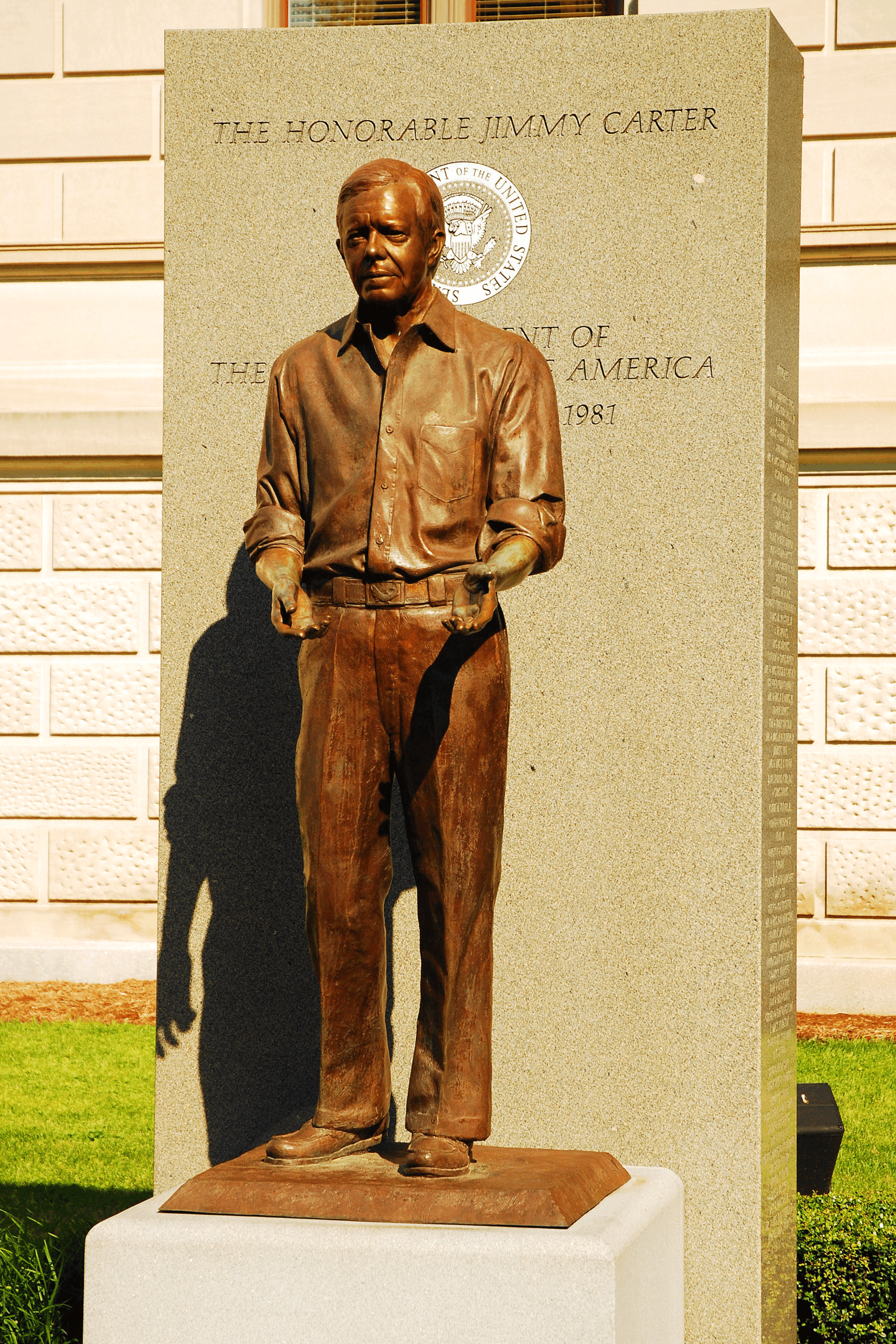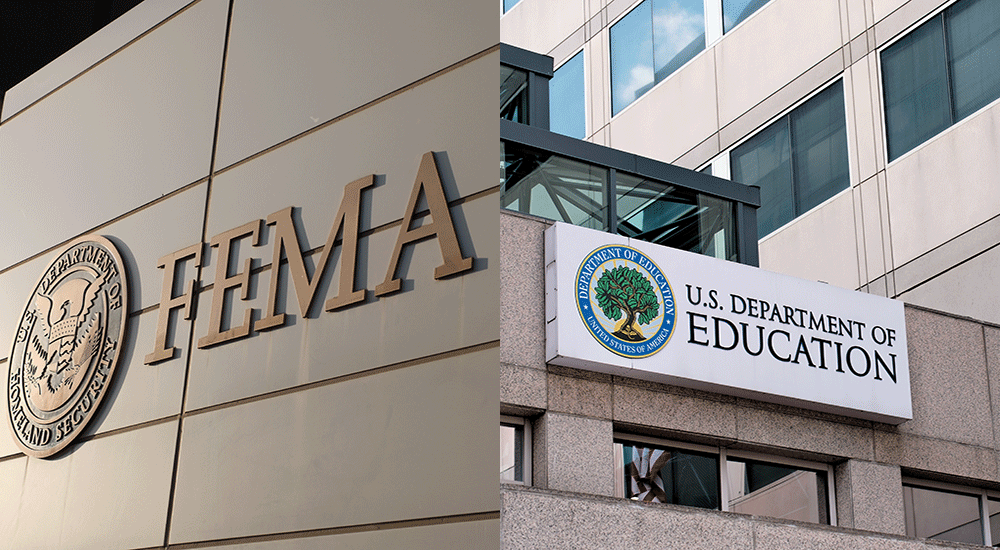During the eulogy at President Jimmy Carter’s funeral Thursday, his former advisor, Stuart Weitzman, reminded attendees and virtual spectators that among the 39th U.S. president’s accomplishments were his founding of the Federal Emergency Management Agency (FEMA) and the U.S. Department of Education (ED).
Both federal agencies, which were closed today after President Joe Biden declared Jan. 9 a National Day of Mourning, have had a significant impact on campus safety.
FEMA’s Role in School Safety
FEMA was officially created in 1979 through an executive order by President Carter. In part, FEMA provides guidance, grants, and resources to help educational campuses prepare for, respond to, and recover from emergencies. Some guides, programs, and resources provided by the agency for schools include the National Incident Management System (NIMS), Multihazard Emergency Planning for Schools Toolkit, Integrated Public Alert and Warning System (IPAWS), and After-Action Reports: Capturing Lessons Learned and Identifying Areas for Improvement.
RELATED ARTICLE: How Colleges Can Leverage FEMA’s IPAWS Program to Save Lives During Emergencies
The Department of Education’s Role in School Safety
The Education Department began working as a stand-alone department on May 4, 1980. The ED sets policies for federal financial aid for education and administrators and coordinates most federal assistance. It enforces federal laws that prohibit discrimination in programs and activities that receive federal funds, pushing for equal access to education for every individual. The department also collects data on trends in education and oversees research that helps identify leading practices.
RELATED ARTICLE: U.S. Department of Education Awards Oxford Area Community School District Over $700,000 in Emergency Funds
Regarding school safety, the ED administers programs that address violence prevention, mental health services, and drug prevention, among other things. It enforces the Clery Act, which requires colleges and universities to report campus crime data, and provides customized reports on campus crime and fire data.
The department also helps schools manage safety, security, and emergency management programs through the Readiness and Emergency Management for Schools (REMS) program. The REMS’ Technical Assistance (TA) Center offers a free application allows personnel to walk around campus buildings and grounds and examine their safety, security, accessibility, and emergency preparedness. It generates a customized to-do list that may be used in the short term and long term to address facility improvements, prompts teams to share pertinent information with first responders, and contains relevant resources on several education facility and preparedness topics.
FEMA Honors President Jimmy Carter
On Jan. 8, FEMA issued a press release honoring the life of President Carter.
“President Carter possessed the foresight to recognize the nation required a unified and coordinated emergency response system,” said FEMA Administrator Deanne Criswell. “Much like he lived his life in service to others, he laid the groundwork for generations of emergency managers dedicated to putting people first.”
RELATED ARTICLE: IS-800 D National Response Framework Exam Questions

A statue of President Jimmy Carter stands outside the State Capitol in Georgia, Carter’s home state. (Adobe Stock Photo by kirkikis)
Prior to the establishment of FEMA, the coordination of emergency response functions were spread across the federal government, state authorities, and local authorities. Carter’s Reorganization Plan No. 3 of 1978 “laid out the the framework for FEMA, merging five agencies and functions from the Departments of Defense, Commerce, Housing and Urban Development, and General Services Agency under one banner,” the press release says.
Executive Order 12127, which went into effect April 1. 1979, established the agency, and the subsequent Executive Order 12148, signed on July 20, 1979, “gave FEMA the dual mission of emergency management and defense.” In 2003, it later became part of the Department of Homeland Security, along with 21 other organizations.
“FEMA’s mission of helping people before, during and after disasters is derived from President Carter’s deep-rooted commitment to service,” said FEMA Deputy Administrator Erik Hooks. “Each survivor we help, every community we uplift, is a tribute to his legacy and vision.”
More on the history of FEMA can be found here.
The History of the Education Department
The first Education Department was founded by President Andrew Jackson in 1867. Over the years, the office operated under different titles and was housed in various agencies, including the U.S. Department of the Interior and the former U.S. Department of Health Education and Welfare, accoriding to the ED’s website.
RELATED ARTICLE: Dept. of Ed. Releases School Diversity Report, Announces New Grant Program
“Beginning in the 1950s, political and social changes resulted in expanded federal funding for education. The successful launch of the Soviet Union’s Sputnik in 1957 spurred nationwide concern that led to increased aid for science education programs.” the site says. “The 1960s saw even more expansion of federal education funding: President Lyndon Johnson’s ‘War on Poverty’ called for the creation of many programs to improve education for poor students at all levels—early childhood through postsecondary.”
The department’s growth continued in the 1970s with national efforts to support racial minorities, women, people with disabilities, and non-English speaking students gain equal access to education.
Education is our most important national investment. Every citizen has a vital, personal stake in this investment. Our ability to advance both economically and technologically, our country’s entire intellectual and cultural life depend on success of our great education enterprise. – President Jimmy Carter
On Oct. 17, 1979, President Carter signed the Department of Education Organization Act into law, splitting the Department of Health, Education, and Welfare into the Department of Education and the Department of Health and Human Services.
“As we celebrate his life & legacy, we honor his memory by continuing to promote educational excellence & equal access for students of all ages,” the ED wrote on social media Wednesday.







